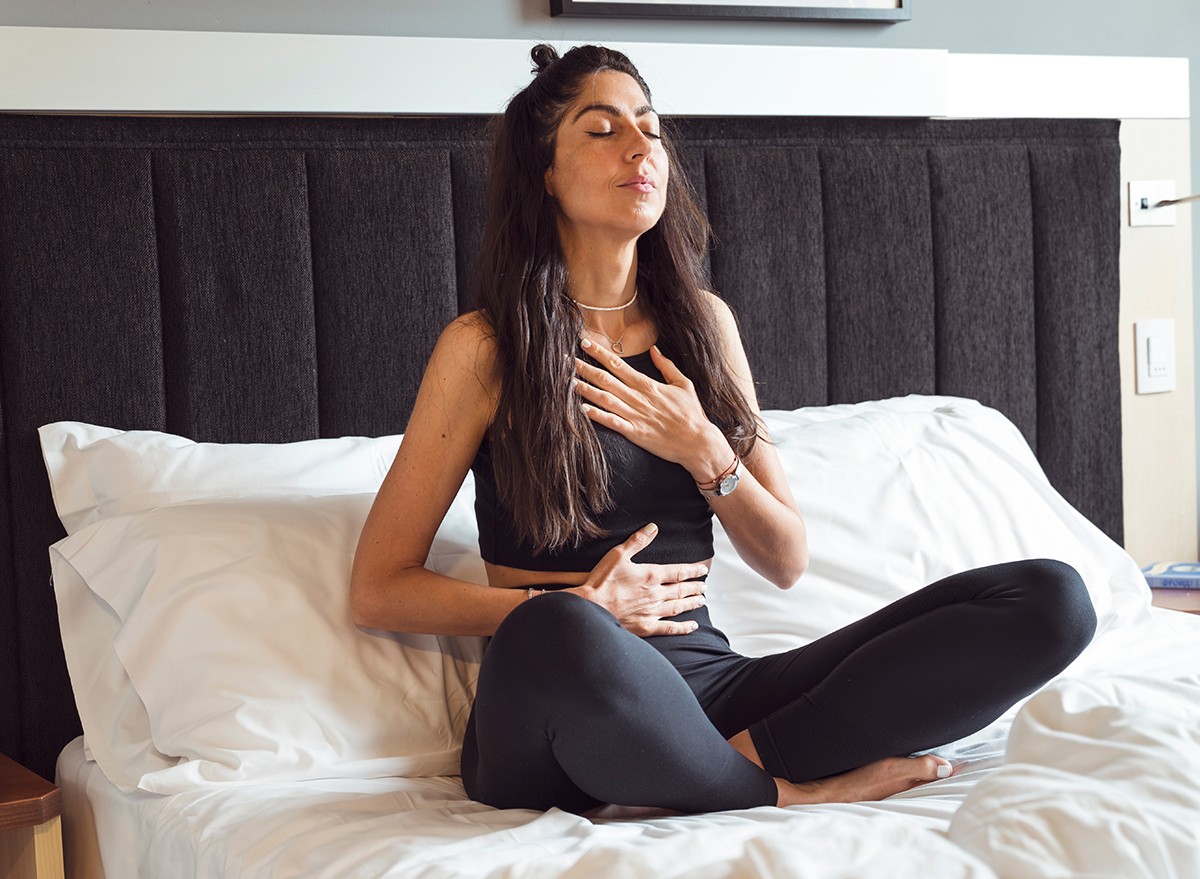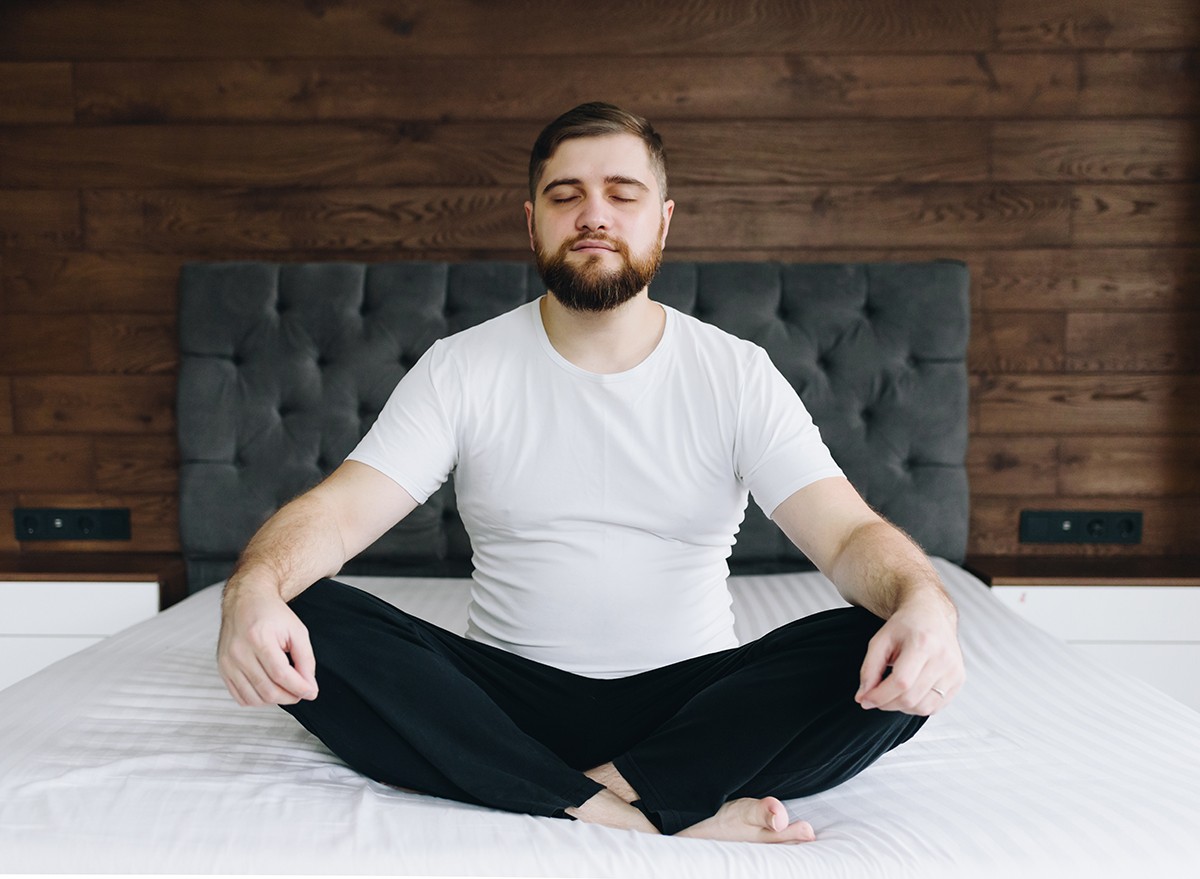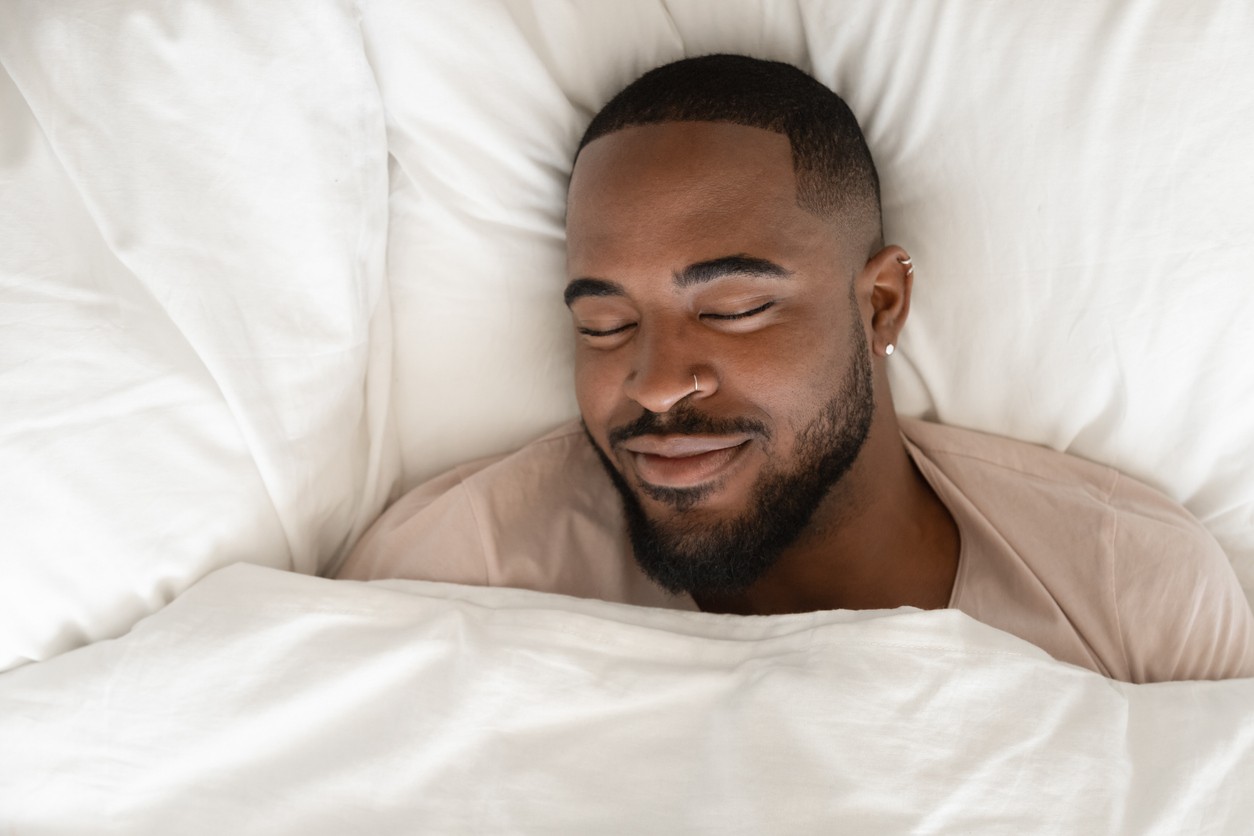Experts Share the Secret to Falling Asleep in 60 Seconds

Struggling to fall asleep at bedtime is a common issue, especially in this age of screens at bedtime and overstimulation. If you want to fall asleep quickly, breathwork can make a difference—specifically the 4-7-8 method. “The 4-7-8 breath is one of the most popular techniques for sleep and general relaxation,” Jamie Clements, a breathwork coach and founder of The Breath Space, tells Glamour UK. “The benefits of this technique are well documented in areas such as reducing stress and anxiety; improving focus and immunity and lowering blood pressure, which all stem from increased parasympathetic activity within the nervous system.” Here’s what you need to know about this method, and how it can help you fall asleep within 60 seconds.
RELATED: 5 Signs You Need a New Mattress.
What Is the 4-7-8 Method?

The 4-7-8 method was created by Dr. Andrew Weil, an integrative medicine specialist at the University of Arizona. “By inhaling for 4 seconds, holding the breath for 7 seconds, and exhaling for 8 seconds, this method helps regulate the nervous system and can lead to improved mental and physical well-being,” says the Andrew Weil Center for Integrative Medicine. “It’s an accessible practice suitable for anyone seeking a quick way to alleviate stress and enhance calmness.”
Calm Down

The 4-7-8 method is highly effective for calming the body and mind. “The breath acts like a remote control into our autonomic nervous system,” Clements says. “This part of our nervous system is made up of two primary branches, the sympathetic (fight-flight) and the parasympathetic (rest-digest), and through the breath we have the ability to activate either one. The 4-7-8 breath is great for activating the rest-digest response.”
De-Stressing Technique

The 4-7-8 method can help de-stress both body and mind. “Yoga breathing techniques calm the body down and bring it into a more relaxed state,” Integrative medicine specialist Melissa Young, MD, tells the Cleveland Clinic. “This kind of breathing can help us focus our mind and our body away from worries and repetitive thoughts. The counting sequence is a way to focus your mind on something other than your worries.”
Clearing the Mind

Having a calm mind is important for falling asleep. “What a lot of sleep difficulties are all about is people who struggle to fall asleep because their mind is buzzing,” Rebecca Robbins, an instructor in medicine at Harvard Medical School and associate scientist in the division of sleep and circadian disorders at Brigham and Women’s Hospital in Boston, tells CNN. “But exercises like the 4-7-8 technique give you the opportunity to practice being at peace. And that’s exactly what we need to do before we go to bed.”
RELATED: Doing This Before Bed Can Help You Sleep Better.
Feeling Lightheaded

It’s normal to feel a little lightheaded when starting the 4-7-8 technique. “Normal breathing is a balance between breathing in oxygen and breathing out carbon dioxide,” Dr. Raj Dasgupta, a clinical associate professor of medicine at the University of Southern California’s Keck School of Medicine, tells CNN. “When you upset this balance by exhaling more than you inhale, (it) causes a rapid reduction in carbon dioxide in the body,” he said. “Low carbon dioxide levels lead to narrowing of the blood vessels that supply blood to the brain. This reduction in blood supply to the brain leads to symptoms like lightheadedness. This is why it is often recommended to start slowly and practice three to four cycles at a time until you are comfortable with the technique.”
Feeling In Control

The method can help you feel more in control, experts say, especially when it comes to trouble sleeping. “But when we can manage our stress over the course of the day (and) implement some of these breathing techniques, we can put ourselves in the driver’s seat instead of being victim to events that happen in our lives,” Robbins says.
Practice Good Sleep

The more you practice the 4-7-8 method, the better you will be at it, and the faster you will fall asleep when incorporating it into your sleep routine. “You’re going to see results really quickly,” Young says. “Getting into a habit at certain times of the day makes it easier to stay with it. It doesn’t matter when you do it; it just matters that you actually practice it.”